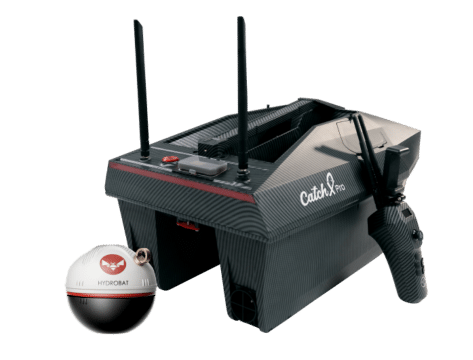7 Ways To Catch Bait For Fishing
Catching live bait for fishing can be one of the best ways to catch many types of saltwater and freshwater fish. However, buying live bait can be expensive. Trying to catch live bait can be difficult and time-consuming. As a charter fishing captain, it is important to have live bait on each trip. Luckily there are many ways to catch live bait.
The best ways to catch bait include using a cast net, pinfish trap, or sabiki rigs in saltwater. For freshwater using a seine net, minnow trap, hand net or small hooks are good options. Each method works well under certain conditions. In this article, we will talk about which bait catching methods are best for many types of baitfish. If you do not want to use live bait there are many good imitation lures for each type of baitfish.
How to Catch Bait
1. Cast Nets
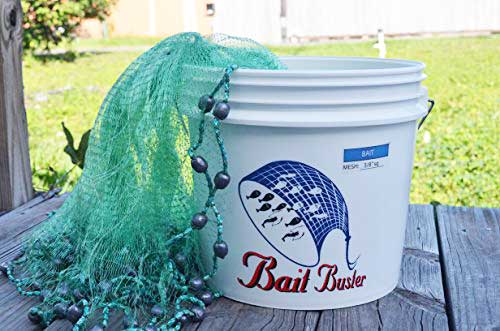
Using a cast net is the fastest way to catch lots of bait. Learning how to throw a cast net can be fun but does take practice. Different size baits and types of bait require different size cast nets with different mesh sizes within the net. Small cheap nets cost around 50 dollars while large higher quality nets can cost over 200 dollars.
The most popular size cast net is probably a 6-foot radius net with 3/8 inch mesh. This can be used to catch all types of bait in water less than two feet deep. If the bait is large or in deep water it is good to get an 8-12 foot cast net. Large bait can swim fast so getting a net with large mesh allows the net to sink faster. Mullet and bunker cast nets usually have 1-1/4 inch mesh size and have a 10-12 foot radius. Also having more lead weight per radius foot allows the net to sink faster. Most cast nets are weighted with between .75 and 1.5 pounds of lead or steel per radius foot.
2. Sabiki rigs
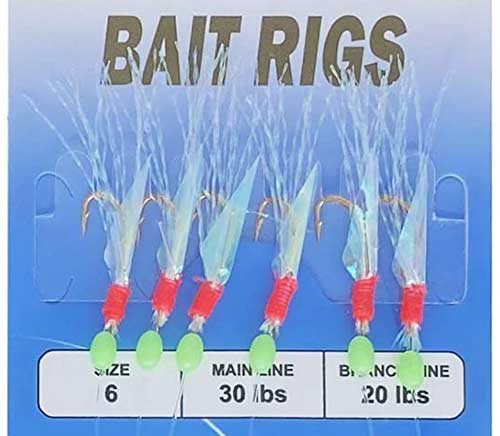
Sabiki rigs are a very popular way to catch bait such as mackerel, herring, greenbacks, pinfish, and ballyhoo. The sabiki rigs consist of around 6 hooks that have mylar material and mini twinkle skits. A bead at the front of the knots looks like the head of the bait. These hooks do not have weights but the weight should be added to the swivel at the end of the rig. Since you are fishing for bait size fish the rod and reel do not need to be large. There are even special fishing rods that do not have eyelets that are designed for sabiki rigs.
One trick many people do if the fish are not biting is to add fresh bait to the hooks. For many types of baitfish, this will increase the chance the bait will bite. Pieces of squid, shrimp, bonito, or any baitfish should work. To use a sabiki rig cast it out, let it sink to the bottom or past the bait, and then retrieve the rig. Once a fish is caught and brought onto the boat using a small dehooker is a quick way to get the bait off the hooks. Put the bait directly into the livewell and handle the bait as little as possible to keep it alive and in good condition.
3. Minnow Traps
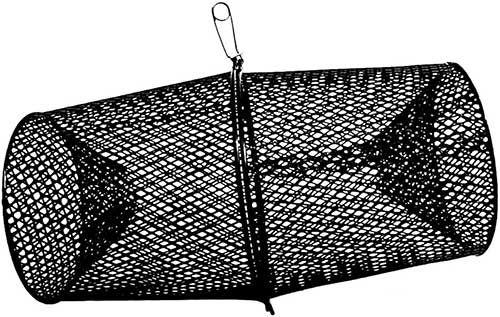
Minnow traps are a great way to catch small freshwater baitfishor saltwater baitfish. Mostly minnow traps are used in freshwater. Bait such as bread, hotdogs, dogfood, cat food, large worms, fish scraps, or chum can be placed inside the trap to attract the fish. The baitfish swim into the trap via the inverted cones. Since there is only a small elevated hole it is difficult for the bait to escape once inside.
Minnow traps can be placed in ponds, lakes, rivers, streams, or even large mud puddles to catch bait. These minnows can then be used for bait, to stock ponds, put in a fish tank, or maybe just check them out and release the fish for fun. The minnow trap should be placed on a rope so that it can easily be retrieved. These traps are made of a coated metal mesh and do sink in the water.
4. Pinfish Traps
Pinfish traps are a great way to catch pinfish for bait. The advantage of pinfish traps is that you set the trap in advance and should have bait when it is needed. Pinfish can live in pens so it is a good bait to keep for live bait for fishing trips on the ocean.
The pinfish trap works by placing a block of chum, squid, shrimp, or fish scraps in the center bait container of the trap. The pinfish find their way into the trap through holes along the bottom similar to a minnow trap. Usually, the trap is allowed to soak for several hours or overnight. A good spot to set a pinfish trap is in shallow grass beds. Some spots will catch tons of pinfish and other spots might not catch any. It is mostly trial and error to find the best spots.
In addition to pinfish, the traps will catch other small snappers and grunts. It is important to sort the bait and only keep pinfish cause it is illegal to have undersized gamefish in the livewell. Pinfish work well on a float near the surface for fish such as tarpon, barracuda, sailfish and king mackerel. Add weight to fish on the bottom for large snapper, grouper, sharks, and large jacks.
5. Minnow Seine Net
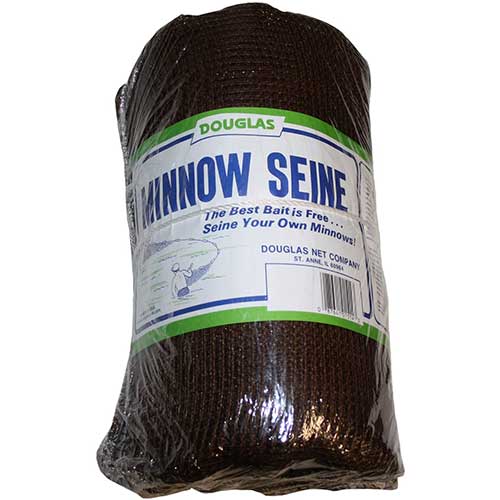
Seine nets are a great way to catch minnow in streams, rivers, along the banks of lakes, and at the beach. The net can be operated by one or two people. On the bottom of the net, there are lead weights to help it drag along the bottom. The top of the net has floats to help the upper section of the net from sinking. Minnow seine nets are typically 4 foot by 4 foot or 12 foot by 4 foot.
Small seine nets can be attached to sticks or poles and operated with one person. Large minnow seine nets need to be operated with two people. The users should keep the weighted line near the bottom and walk forward slowly in water less than 4 feet deep. This is a great way to catch crayfish, creek chubs, minnows, sand perch, and sunfish.
6. Minnow Net
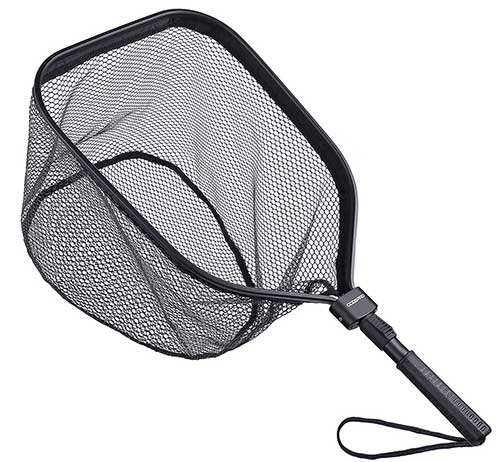
It is surprising how much bait can be caught just using a hand net. As a kid, I loved carrying around a minnow net in case I came across newts, salamanders, frogs, insects, tadpoles, crayfish, turtles, or baitfish to catch. Hand nets cat catch bait in small creeks, shallow water, and even puddles where other methods are not as effective.
Small minnow nets can also be used as a landing net when catching trout, carppie and bass. When catching minnows one strategy is to throw bread or some type of bait into the water to attract the minnows. Then scoop quickly to catch them and then quickly place the caught bait in a bucket. Some hand nets have long handles which can be an advantage or disadvantage depending on the situation. Even smaller bait nets are useful for catching bait in live wells and fish tanks.
7. Small Baited Hook
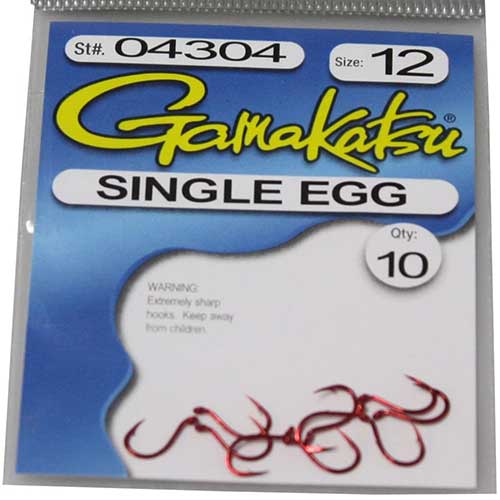
When fishing for small baitfish it is important to use a very small hook with a light fishing line. Trout hooks sizes are typically between 6 and 14 with 14 being the smallest. Size 14 hooks will work well to catch small baitfish. The smallest hooks I have seen for sale are size 26 however, size 32 is the smallest hooks size made. Size 26 is a tiny hook that is so small you could catch fish in a fish tank. Light line 2 pounds or less should be used when micro fishing with these tiny hooks. Two-pound Sufix Nanobraid is one option for a thin line or 1 pound Sufix Ice Magic used for ice fishing is another good line choice.
When fishing for small baitfish drag is not important and the line can even be tied directly to a stick. The hook is typically baited with a small piece of worm or bread. Small flies for fly fishing are another option and bait will then not need to be added. Fishing for tiny fish can be a challenge with is part of the fun of fishing in general. Micro fishing is fun for kids and can be good bait for larger fish. If kids get into micro fishing having a fish tank to put the fish in is a good idea so they can learn about all the different types of fish they catch.
Frequently Asked Questions
What is the best way to catch baitfish?
The best way to catch baitfish is with a cast net. With sizes ranging from 3-12 feet in radius, cast nets can catch small minnows to large mullet depending on the mesh size. The reason a cast net is the best method is that you can potentially catch hundreds of fish in one throw. That is enough bait to fill the livewell for a full day of fishing. Finding the bait in an area where a cast net can be thrown is the difficult part. The net can get snagged on trees or structures on the bottom. Another issue with cast nets is they can not be used in many freshwater lakes and streams.
How do you catch bait without a cast net?
When anglers do not know how to throw a cast net or are not allowed to use one there are still many ways to catch bait. The next most popular method is to use pinfish traps or minnow traps. These are set out with chum inside and allowed to soak for several hours. Oftentimes these traps will catch hundreds of baitfish. If anglers do not have nets or traps then small hooks or a sabiki rigs can be used to catch lots of types of bait. Finally, if that does not work a hand net or minnow seine net can be used to catch bait in shallow water. Sometimes bait is just to time-consuming to catch and using artificial lures that imitate bait is a better option.
What is the best bait to catch?
There are so many types of freshwater baits and saltwater baits and the best bait is generally what the fish are naturally feeding on. The saying is to match the hatch. Using whatever bait is natural in the area is best. In the ocean, my favorite baitfish to fish with is a pilchard. When fishing in freshwater worms are often the most effective. However, when fishing for hybrid striped bass at night alewife is my favorite bait. Shrimp is the most popular bait for ocean fishing and worms are the most popular bait for freshwater fishing. Having fresh live bait can be the most productive way to catch fish.
How do you attract baitfish?
The best way to attract baitfish is with food. When setting pinfish traps or minnow traps some type of food is placed inside the trap. Common baits used include chum, fish scraps, bread, hot dogs, squid, shrimp, or worms. Chum can also be placed in a chum bag to attract fish to the boat. Once fish are in the chum line then a cast net can be used to catch them. If a cast net is not available the fish will likely bite on a small hook with a piece of bait.
The last way to attract baitfish is with light during the night. Light attracts insects and zooplankton in the water which the baitfish come to feed on. The baitfish feeding motion in the water can then attract larger predator fish.
This essay is from: https://www.globalfishingreports.com/how-to-catch-bait/


























